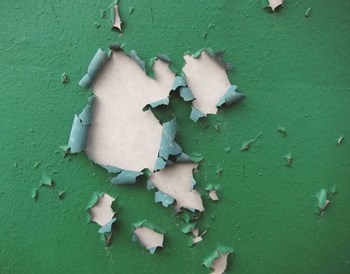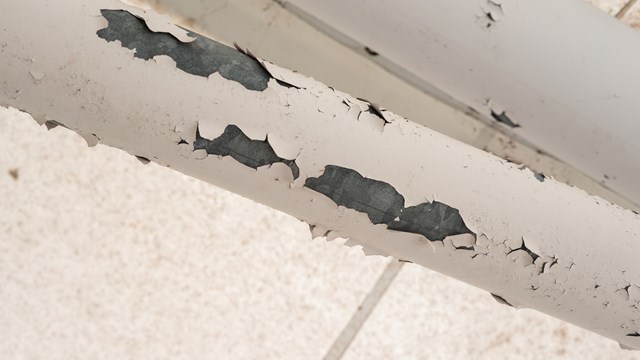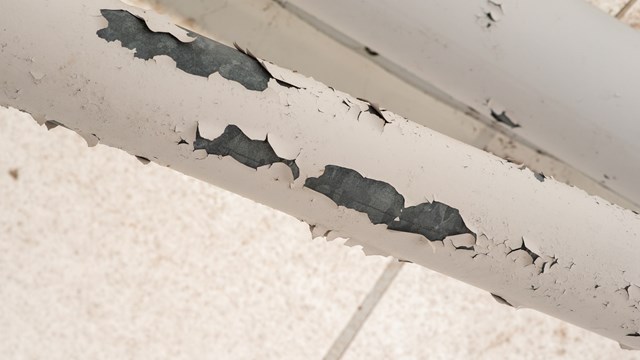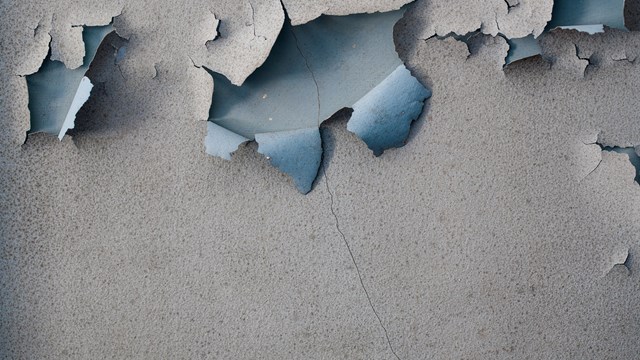
In New York, buying a co-op or a condo goes something like this: Your realtor takes you to see your dream home. You put in an offer—along with a bunch of other people. After a ferocious bidding war, your offer is finally accepted. You submit a bunch of very personal documents (in the case of a co-op at least) and settle in for the interminable wait while all that paperwork is reviewed by what seems like a small army of attorneys.
As part of this process, you may or may not choose to have your home inspected. While home inspections are very common in the suburbs, they aren’t as typical in apartments. But you move into your new place and you and your family live happily ever after . . . until you find out that your dream home is filled with invisible hazards that can make you and your children very sick.
Deadly Lead
While some hazards—things like crumbling masonry, cracked sidewalks and deteriorating windows—are visible even to an untrained eye, other dangers are not so obvious. A few are entirely invisible to the eye and they have no smell or taste, but they are still deadly.
Substances like lead, carbon monoxide, radon and formaldehyde can permeate a building or unit without anyone knowing until it’s too late, and the result can be tragic.
But these hidden dangers in New York City co-op and condo buildings can be discovered, remedied and avoided with a little extra legwork.
Lead paint is an incredibly common hazard, says Claudio Gonzalez, director of business development at ALC Environmental based in New York City. Lead was widely used in the United States up until 1978—though it was banned in New York City in 1960—it was used in all sorts of household items including paint.
“Manufacturers thought it was the best thing you could use because it made paint more durable, so they used it in windows and doors,” he says. But that’s not the only place lead paint was used. It could be used in paint on any surface.
Despite the city’s ban, though, that didn’t mean that everyone who had used lead paint in his or her apartments had to remove it. It just meant that they couldn’t use fresh lead paint. The old lead paint could stay, and much of it still exists.
If you are renting an apartment to a family with a child, and the unit has lead-based paint, you need to keep the lead-based paint intact and prevent it from chipping, dusting or peeling, Gonzalez says.
According to Local Law 1 of 2004, New York City’s Lead Poisoning Prevention Law, if you are renting an apartment to a family who has a child under the age of 6, the building has three or more apartments and the building was built before 1960 or between 1960 and 1978, and the owner knows that the building has lead paint surfaces, you must take certain precautions.
Every year, the apartment must be inspected for lead paint hazards, which include dust from lead paint, peeling or damaged lead paint, lead paint on crumbling plaster or rotted wood or other issues that could harm a child with regard to lead paint, says William Kerbel, president of Environmental Health Investigations with offices in New Jersey and New York.
If any problems are found during the investigations, “The landlord would have to do the repairs,” Kerbel says.
To test for lead in the paint, there’s an x-ray fluorescence instrument that you could use that runs right up against the wall called an XRF Lead Analyzer, but it costs about $8,000.
“That’s not something a homeowner will buy,” Kerbel says. “To go in and test an apartment to find out where all the lead is, you’re talking about $300 to $500 to get it done through a professional.”
Lead doesn’t just come from paint, however.
Lead On...
“Lead could also be in drinking water,” Harvey Klein, laboratory director for Garden State Laboratories, Inc. based in in Hillside, New Jersey, says. “Lead pipes were common prior to the 1970s.”
Depending on the pipes themselves and the corrosiveness of the water—if it’s soft water—the professionals would test the chemical parameters of the water. If it’s corrosive, it could result in lead being released into the water, Klein says. Also, if the water pipes aren’t properly grounded, it can accentuate the corrosion of the pipes, also increasing the lead content.
The short-term solution would to simply flush out the lines.
“Let the water flow until you at least get a temperature change,” Klein suggests. “But in large apartment buildings, you have many floors. That can be a continuing problem, and you have to look at the corrosiveness of the pipes throughout the building, and you may have to treat the water.”
Treating the water could cost thousands of dollars per unit, and every unit is unique in every building.
“Four out of five faucets in a building may be fine, and one may have corrosiveness,” he says. “It’s a unique scenario.”
Other Culprits
Lead’s not the only problem lurking within New York walls and pipes.
Mold is also very common in New York homes, whether they’re in the city or in the suburbs.
That’s because mold comes from water, and water doesn’t care if it’s entering a condo, a co-op or a single-family house.
“Whenever you have flooding or severe weather, you’ll have mold,” says Klein. “It grows well in warm, moist, dark environments. It’s going to happen.”
But if you take care of the mold immediately, it may not be such a big, expensive deal. If the mold growth is minimal, you may be able to simply sanitize the area using a diluted non-scented bleach solution, Klein says. Follow instructions on the bottle to dilute it.
Asbestos is one problem, however, that’s not going to go away with a little bleach and some water, says Gonzalez. It goes back to Egyptian times, and it’s still being used in other parts of the world. In the United States, however, it was banned in 1979. Just like lead, though, it was banned for new use. It is still common to find it within homes.
“Asbestos was used to make the materials resistant to heat and to fire,” Gonzalez says.
For that reason, it was common in roofing materials, window caulking and tiles.
If you live in a building that was built prior to 1979 and you suspect that it has asbestos, you can find out for sure by hiring a professional inspector to take samples.
“They can identify suspect materials by testing them to confirm or corroborating,” Gonzalez says. “You can’t just look at it and say, ‘Alright, this is asbestos.’”
Invisible Dangers
There are some toxins that are common outside New York City that aren’t as common within the city. One of those is radon, which is a radioactive, colorless, odorless, tasteless gas, occurring naturally underground in a wide range of materials from granite to limestone. As an indirect decay product of uranium or thorium, radon is considered a health hazard due to its radioactivity. The federal Environmental Protection Agency (EPA) recommends that the average radon exposure rate indoors not exceed 4.0 picocuries per liter (pCi/L).
The reason why it’s more of a suburban occurrence is because radon comes through the soil and into the home, and is therefore more common in a home which rests directly on the soil. Understandably, the radon levels are typically highest on the lowest level of the home, which means the basement or crawl space of a house or on the first level of an apartment, Klein says.
It’s incredibly dangerous because it is odorless and colorless so you won’t know that it’s in your home. If you are worried about it, you can contact your local health officials who should know your neighborhood’s radon issues and could better advise you as to whether you should ask a home inspector to do a radon test, Klein says. The actual radon test should cost around $200.
While clean air is always desirable—and environmental hazards do good to no one—there’s no question that some people are more susceptible to the health risks involved with any questionable environment. “Elderly, children, people with health problems are all at a higher risk,” says Klein.
Having said that, however, it’s difficult to simply quantify which buildings, neighborhoods and areas of New York have less environmental hazards than others.
While it’s true that older buildings did freely allow the use of lead paint and asbestos, many of these units have been renovated by now—and there are no hazardous materials remaining.
Even if there are environmental hazards lurking behind those walls, the majority of them don’t pose a threat as long as they remain behind those walls, Kerbel says.
“Asbestos materials may be in an apartment, but as long as they’re in good condition, they’re not going to pose a threat,” he says. “But if you’re knocking down a wall, that’s the time to have the wall tested.”
It’s a complicated, scary issue for homeowners, boards and renters. But there are many resources available. Boards, managers and residents can check out www.EPA.gov/iaq to get detailed information about many different indoor air issues.
Danielle Braff is a freelance writer and a frequent contributor to The Cooperator.






Comments
Leave a Comment